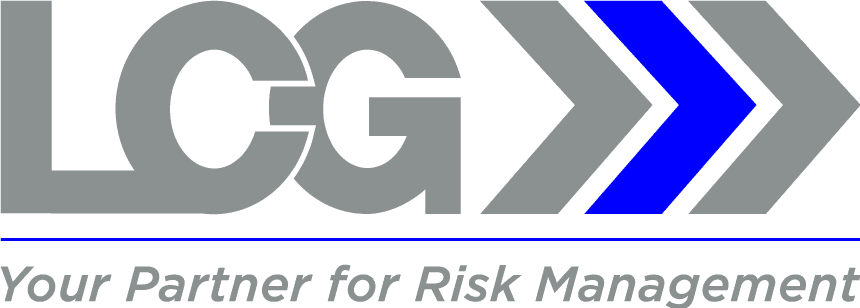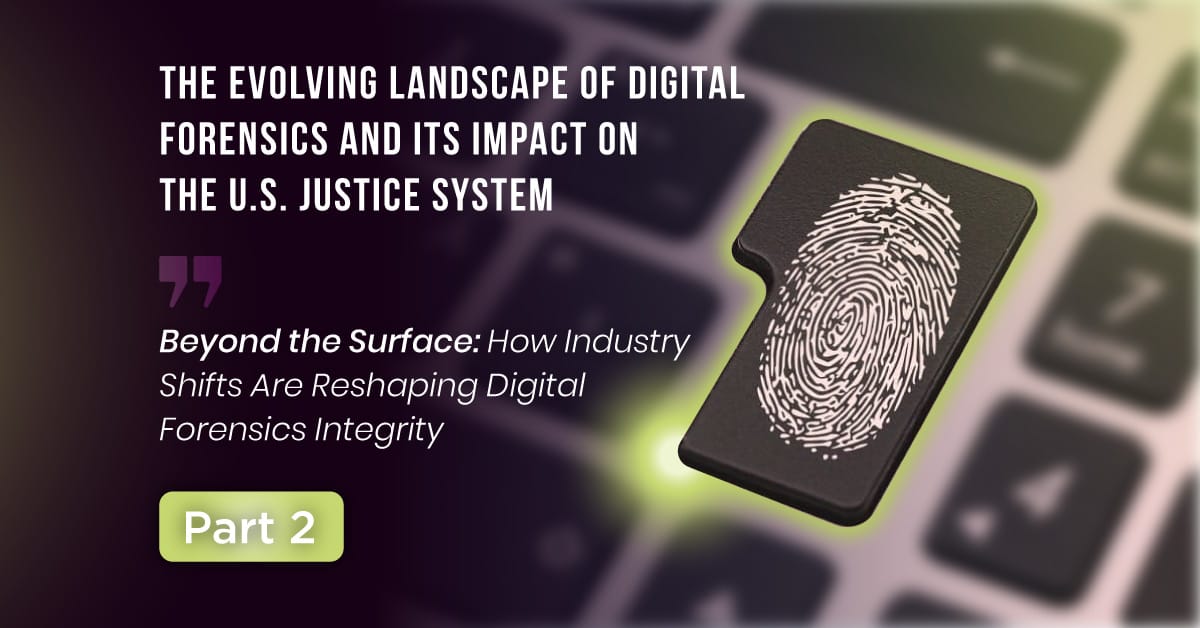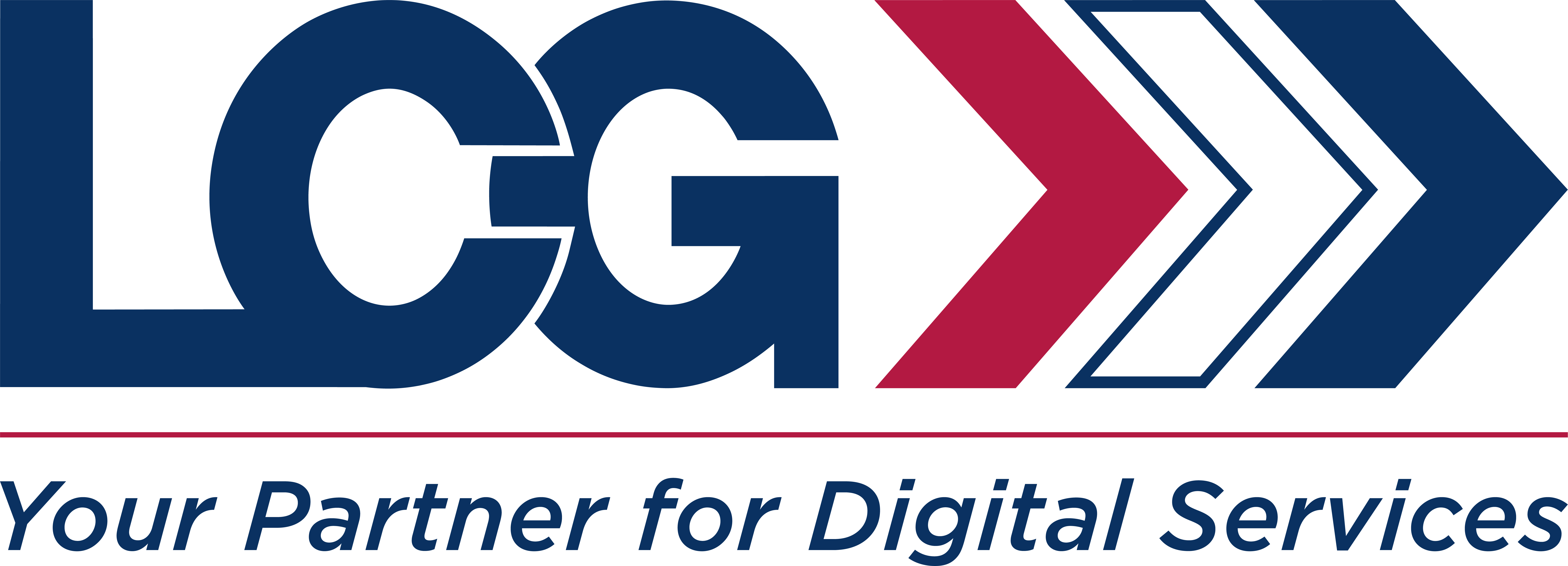Beyond the Surface: How Industry Shifts Are Reshaping Digital Forensics Integrity
Contributed by: Kris Carlson, LCG COO, Former ICAC Commander, and Digital Forensics Investigator
In today’s increasingly data-driven world, digital forensics has transformed from a specialized backroom process into a cornerstone of modern litigation, investigations, and corporate compliance. As we explored in Part 1 of our series, this evolution has brought remarkable growth, deeper integration with legal processes, and a new set of challenges — particularly around standards, accuracy, and legal admissibility.
Now, in Part 2, we turn our focus to the industrial and economic forces shaping how digital forensics is delivered — and what that means for its reliability, independence, and future integrity, a critical conversation.
As eDiscovery vendors expand into forensic territory and as large consultancies or CPA firms absorb traditional forensic providers, the underlying motivations and methodologies driving digital evidence collection are shifting. Add to that the emergence of litigation insurance policies as a gatekeeper for vendor selection, and we have a perfect storm of efficiency-driven decision-making that, in many cases, unintentionally compromises long-accepted forensic rigor.
Let’s unpack what’s happening.
The eDiscovery Invasion: From Data Processing to Forensic Analysis
eDiscovery has always operated adjacent to and, in many cases, is intertwined with digital forensics. Both involve the identification, collection, and review of electronic data. However, the goals and methods are vastly different.
eDiscovery prioritizes volume handling, workflow efficiency, and responsiveness to discovery deadlines. Digital forensics, on the other hand, demands investigative depth, precise methodology, and chain-of-custody integrity, oftentimes (and for good reason) at the cost of erroneously set deadlines. The former is about getting the job done quickly; the latter is about ensuring the job withstands the microscope of legal scrutiny.
Why This Matters
As eDiscovery firms move into digital forensics — often to offer “one-stop-shop” services to law firms and corporate clients — they bring with them a set of operational assumptions that may not align with forensic best practices:
- Automation over Analysis: eDiscovery relies heavily on automated tools to speed up processing. However, forensic integrity requires validation, especially when source devices, deleted data, or encryption are involved. This is often done manually.
- Efficiency over Expertise: In many cases, forensic tasks are performed by professionals with strong IT or data handling skills but not necessarily forensic training, certification, or investigative mindset.
- Blurred Lines of Accountability: eDiscovery providers may not maintain the same rigorous documentation, peer review, or expert witness readiness that a standalone forensic provider would.
The result? Forensic findings may be efficient but with questionable defensibility or convenient but not complete. And in legal proceedings — especially those involving criminal or high-stakes civil litigation — even the slightest chink in the armor can lead to increased scrutiny that is costly on many fronts; a risk clients can’t afford.
Forensics Goes Corporate: Mergers, Acquisitions, and Shifting Priorities
Another significant industry shift is the acquisition of forensic firms by large consulting and CPA firms. On paper, this is a win-win: broader resources, cross-functional expertise, and national (or global) reach. However, these integrations can come with trade-offs.
The Scalability Dilemma
Large business service firms are built on scalable, repeatable service models. They thrive on uniform processes, bundled offerings, and aggressive cost control. Digital forensics—particularly when done well—doesn’t always scale neatly, as it should be investigative, adaptive, and sometimes time-consuming.
This leads to an uncomfortable tension:
- Should a forensic analysis be thorough, even if it’s more expensive and takes longer?
- Or should it be “good enough,” especially if legal teams are willing to accept the risk for the sake of efficiency?
Too often, cost-effectiveness becomes the dominant lens, even when the stakes involve criminal liability, regulatory penalties, or millions in civil exposure. In many cases, the goal is to provide an effort that is “good enough” while pushing for a settlement in the hopes that the early, foundational efforts that may be questionable will not be brought into the light.
Conflicts of Interest?
When forensic services are just one of many business lines within a corporate structure, there’s potential for internal pressure to prioritize client retention, billing efficiency, or litigation strategy over independent forensic evaluation. This doesn’t mean forensic professionals working within large firms lack integrity or the desire to provide thorough and effective digital forensic analyses. However, the undercurrent of business incentives may subtly, and sometimes invisibly, shape how investigations are scoped, documented, performed, and presented.
The Quiet Influencer: Litigation Insurance as a Forensic Gatekeeper
Perhaps the most under-examined force shaping the digital forensics landscape is the rise of litigation insurance policies. These policies — increasingly offered to corporations, municipalities, and even law firms — promise financial protection against legal costs. But with that protection often comes a pre-approved panel of “accepted vendors,” selected not necessarily for their reputation, integrity, or forensic rigor but for their cost-efficiency, availability, and low-risk profile.
What This Means for Clients and Justice
The influence of litigation insurers introduces a new and largely invisible filter into the forensic vendor selection process:
- Insurers may prioritize low-cost providers who offer “light” forensic services rather than comprehensive, tool-validated, courtroom-ready investigations.
- Clients may assume vendor quality has been vetted without realizing the selection was based more on cost containment than evidentiary strength.
- Critical decisions about evidence collection and Analysis are increasingly shaped by third-party economics rather than legal strategy or investigative necessity.
This introduces real risks, especially in cases where digital evidence plays a pivotal role (which it does in many, if not most, cases). A forensic investigation influenced more by insurance parameters than by investigative best practices can lead to indefensible collection practices, incomplete data recovery, weak documentation, and inadmissible findings.
Reclaiming Balance: What Needs to Change
None of this is to say that accessibility, cost-efficiency, or corporate scalability are bad. In fact, they’re vital to ensuring that digital forensic services can meet the growing demand across the public and private sectors. But when cost and convenience begin to overshadow forensic integrity, the justice system suffers. To move forward, we need to reclaim balance in three key ways:
- Clarify the Difference Between Data Collection and Forensic Analysis
Clients, legal teams, and insurers must be educated on the difference between collecting data and analyzing evidence. The two are not interchangeable — and treating them as such leads to poor outcomes.
Data collection is a necessary step. However, without proper forensic controls, validation, and interpretation, the resulting data may be meaningless (or, worse, misleading).
- Embed Forensic Standards into Procurement Processes
Whether you’re a law firm selecting a vendor, a corporation relying on your insurer’s panel, or a government agency contracting for forensic services, quality metrics must be embedded into vendor evaluation:
- Does the provider follow Daubert/Frye standards?
- Are their tools validated?
- Can they support expert testimony if required?
- Do they maintain documentation and logs consistent with FRE 702 expectations relating to qualification, relevance, and reliability?
These are not luxuries. They are fundamental protections for anyone relying on digital evidence.
- Promote Collaboration — Without Compromise
Integrating forensic, legal, and IT workflows has immense value, especially in complex litigation or regulatory investigations. However, that integration must not come at the expense of methodological independence or forensic defensibility.
Forensic professionals must be empowered to act independently, even when embedded within larger service models. And legal teams must be willing to listen to forensic guidance, even when it complicates strategy or budgets.
A Fork in the Road for Digital Forensics
Digital forensics is at an inflection point. The technology is advancing rapidly, the demand is growing exponentially, and the commercial pressures are intensifying.
Suppose we allow efficiency to dominate at the expense of integrity. In that case, we risk weakening the very foundations of what we have fought so long to institute—especially in an era when digital evidence is often the most compelling, persuasive, and misunderstood form of proof.
But if we seize this moment to realign our priorities — to ensure that cost, accessibility, and forensic rigor coexist — we can build a more reliable, more equitable, and more trustworthy system of digital evidence handling.
What’s Next in the Series
In Part 3, we’ll examine the real-world consequences of inconsistent standards in digital forensics, from courtroom challenges to public trust issues. We’ll look at high-profile cases, judicial dilemmas, and the growing need for forensic literacy across the legal profession.
Stay tuned — and if you haven’t read Part 1, start there to ground yourself in the evolution of forensic standards and legal frameworks.
Let’s Talk
At LCG, we’re more than just a service provider — we’re advocates for integrity in digital investigations. If your team is navigating the complex intersection of legal, technical, and insurance-driven decision-making, let’s connect. We can help you evaluate vendors, validate methodologies, and ensure your digital evidence strategy stands up to scrutiny.
📩 Reach out at www.lcgdiscovery.com
🔗 Follow us on LinkedIn for updates and insights
This article is part of LCG’s ongoing thought leadership on risk management, digital forensics, and legal technology. All content is original and based on verifiable frameworks, including FRE 702, FRCP, CFAA, ECPA, and Daubert/Frye standards.







